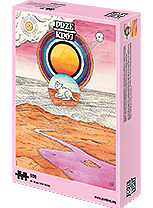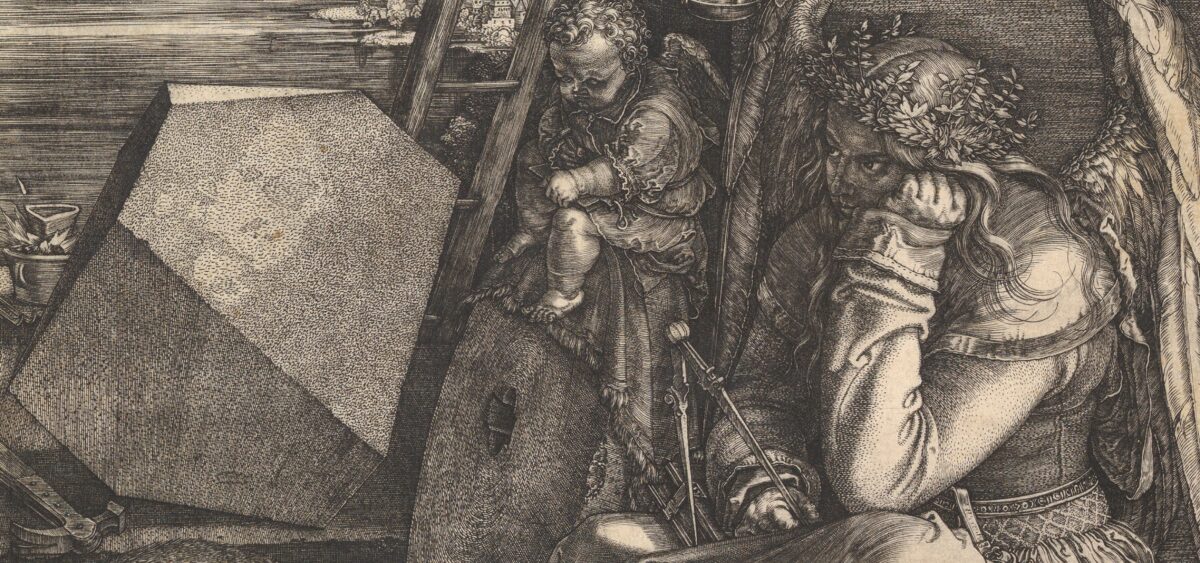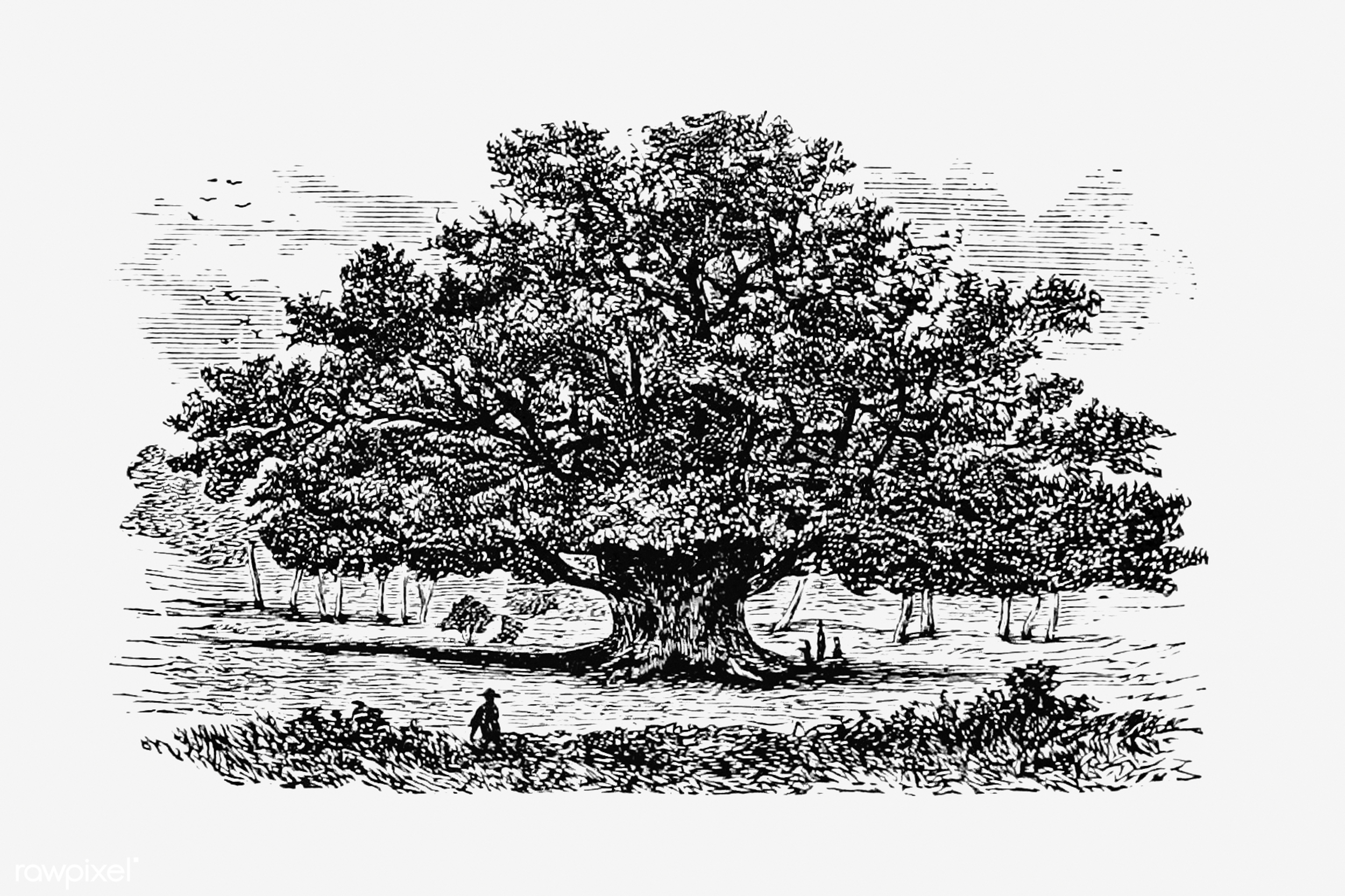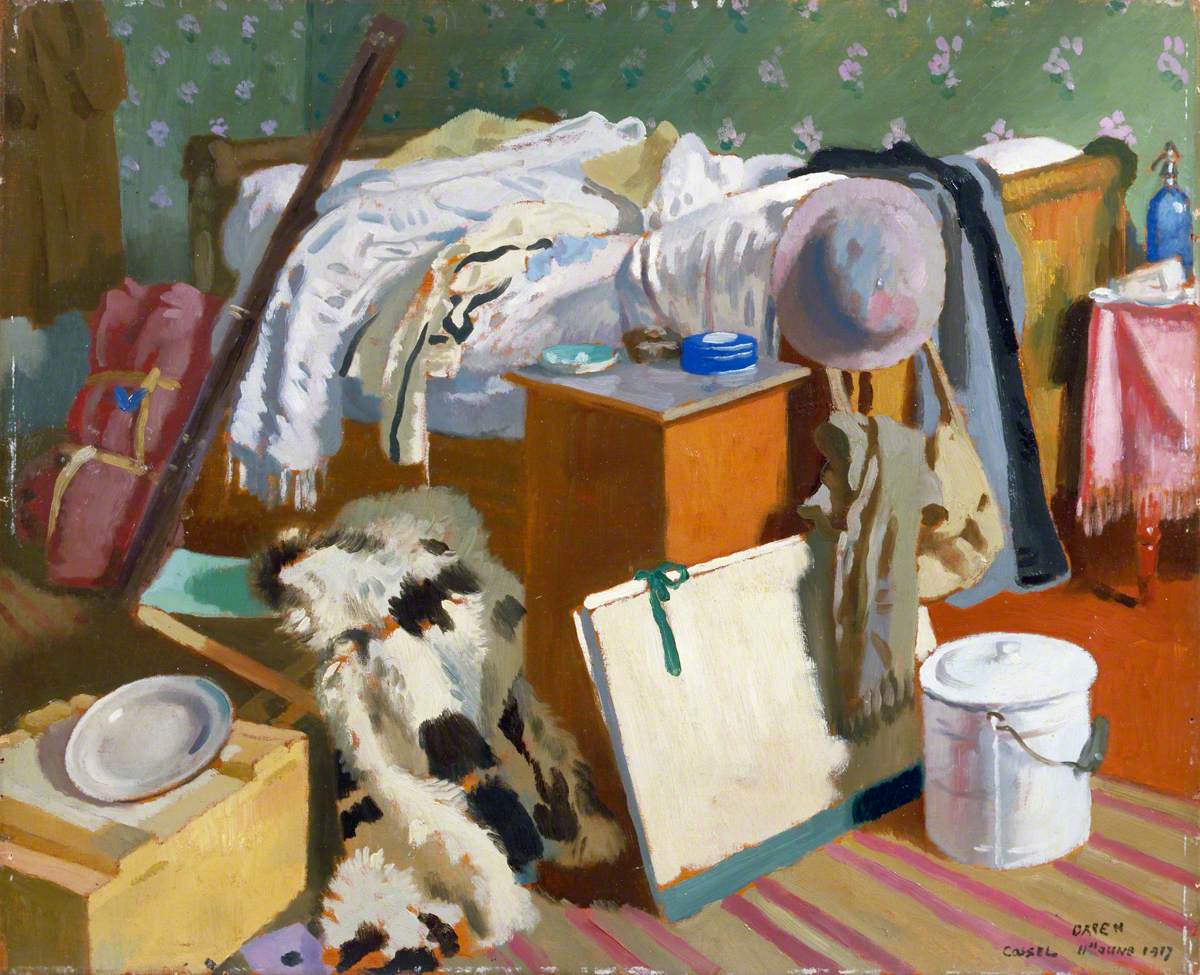
It is from fall—from its full, ripe center, but also from the tiny brown specks that in these dark months soon appear on fruit as a sign of imminent decay—that the most mysterious of human temperaments appears: the melancholic.
During the Renaissance, melancholics were considered thinkers and geniuses, people gifted with the ability of carefully observing the world around them; creative and thirsting for knowledge. Robert Burton, the 17th-century English humanist who wrote The Anatomy of Melancholy, was among the philosophers who identified with this temperament. Both Rembrandt and Albrecht Dürer (who created Melencolia I) surely would have described themselves as melancholics as well. Dürer’s engraving is believed in Europe to be one of the most famous works on the subject. The angel he depicted—leaning forward slightly, its chin resting on its hand—became a universal image of the melancholic for centuries to come. This brooding figure, seemingly devoid of all physical energy and focused on its own internal turmoil, almost sags under the weight of this experience. If people had known the difference between introverts and extroverts in those times, melancholics would have been an excellent example of the former.

The melancholic’s proclivity for brooding and nurturing a withdrawn demeanor isn’t the only revolutionary element in the theory of temperaments. They carry a curious burden, a surplus that has always made them appear much more mysterious than the three other personality types. Ancient physicians and philosophers, such as Hippocrates (the father of humorism) and Aristotle, devoted particular attention to melancholics. They were clearly fascinated by them and described them with an aura of understatement. Yet the melancholic remains an unsolved mystery to this day, unlike the three other, well-researched personality types: the choleric, the sanguine, and the phlegmatic.
Mélas Cholé
A single substance became the cause of all this commotion. Until the Late Enlightenment, this fluid was believed to circulate in our bodies as a thick, oil-like substance; it was supposedly the source of the melancholic temperament. Hippocrates and Galen called it “black bile.” Mélas cholé, the sound of the Greek word they used in their medical and philosophical practices, allows us to imagine its organic form.
When black bile cooled, the melancholic would quiet down and turn into a dreamer, but when it grew warmer, they would fly into a frenzy and become almost manic. If they were an artist or physician, they would come up with dozens of brilliant ideas. Aristotle wrote that substance is cold and limpid by nature, but “if it abounds in the body, [it] produces apoplexy or torpor or despondency or fear; […] when it is overheated, it produces cheerfulness accompanied by song, and frenzy, and the breaking forth of sores, and the like.”
Black bile circulated in the human body only until the turn of the 18th century. The rising popularity of autopsies, for instance those performed by Dr Tulp (who allegedly took care of Rembrandt when he suffered from melancholy), put an end to old beliefs about the effects of the mysterious fluid. Today it is suggested that the substance was simply blood that flowed between the spleen and the liver. It is darker than usual since it contains red blood cells that are in the process of disintegration. Besides, the spleen has always been associated with melancholy—according to Hippocrates, the organ was responsible for producing black bile. Killjoys and hypochondriacs were called “splenetics.” In a letter to his doctor, Dürer drew himself with a mark on his spleen. Some argue that it was a symbolic gesture to express his melancholic nature, while others maintain that an enlarged spleen is a symptom of malaria, which was probably the cause of the painter’s death.
Under the Sign of Saturn
Regardless of whether one stands with the anatomists or the philosophers on this matter, the dark fluid of the melancholics became a legend in its own right, as well as an important chapter of human history that began hundreds of years ago and still continues. In their 1964 book Saturn and Melancholy, Raymond Klibansky, Fritz Saxl, and Erwin Panofsky (a historian of philosophy and two art historians, respectively), described the melancholic temperament as a metaphor for human fate. It is a universal and fascinating figure that in every age caves under the weight of its own existence.
“For centuries black bile was, and most probably still is, the fullest and most general, synthetic representation of an existence mired in sadness; the most perfect primal intuition,” claimed the Polish writer, translator, and historian of literature Marek Bieńczyk in his essay “Melancholy—On Those Who Never Recover What They’ve Lost.” He relates age-old beliefs about melancholics—that they embody an enchanted, deeply human story that goes further back than the development of temperament theory itself. The melancholic is, on the one hand, the personality that is closest to a monotonous and sad existence; on the other hand, it lives in the shadow of an uncommon strength of spirit and mind.
Ancient scientists, alchemists, and astrologists associated that shadow with Saturn—the equivalent of the Greek god Cronus and the largest and most mysterious of planets. This deity gave its “children”—as melancholics were called—a surplus of energy, although it was also capable of overwhelming them with mundane sorrows. Saturn was the patron of farmers and sowers, gravediggers, and all kinds of social pariahs; it was associated with the primeval sanctity of earth. According to the astronomer Ptolemy, the saturnine nature of the melancholic was marred by the worst passions of the soul: envy, anger, obstinacy, deception, and subterfuge.
Saturn’s complex, ambiguous nature was thus passed on to the people over whom this sad god presided. Geniuses were considered melancholics, since they were extremely sensitive and astonishingly perceptive. Dürer noticed that the melancholic nurtured a specific attitude towards life: a stubborn determination to stay away from the swift current, and a philosophy that protects it from the chaos of the outer world, no matter the cost. The same attitude is adopted not only by the ancient philosopher Democritus on the cover of Robert Burton’s 17th-century The Anatomy of Melancholy, but also by the brilliant contemporary financial analyst Dr. Michael J. Burry in Adam McKay’s The Big Short (2015). Burry, who spends most of his days looking at his screen and tirelessly analyzing various market fluctuations, is a monster in the eyes of his colleagues, yet the audience perceive him as an exceptional mind discovering the horrible truth about the American economy. Burry’s unflinching right eye, made of glass (as a child he suffered from a “mysterious illness” that stays unnamed throughout the movie; similarly, Burry never explains why he resigned from pursuing his medical practice), is slightly terrifying. However, it allows the audience to perceive the heroic nature of this melancholic analyst. Sanguine, choleric, or phlegmatic personality types may become jealous of his ability to escape the system and live beyond the financial cycle that falsifies daily existence.
Autumnal People
There is one more school of thought on melancholy. Its representatives see melancholics as people afflicted by an illness, crippled by a surplus of black bile, lethargic or hyperactive under its influence. Modern medicine has identified these illnesses as depression or bipolar disorder. But Freud, who treated his patients for melancholy, simultaneously described people already born with this temperament, because the Viennese doctor (just like Hippocrates) perceived both human life and the world as cyclical. From this perspective, the melancholic unveils the existence of something that resembles a dark “trap door” in the system—life itself. For two seasons out of four, in the spring and summer, this trap door opens and closes faster. Then it starts to slow down. Saturnine children are reminders of the orbit of a smoothly functioning universe, for whom life and death are parts of the same cycle; of the season that follows summer, and turns the plump images of warm May and sweltering July into an entirely different, thicker substance.
In this eternally spinning reality, the melancholic is someone fully mature, wiser than other personality types, yet simultaneously tainted and hiding a bitter blackness at their core—the truth that life leads to death. The old “primal intuition” that Bieńczyk describes associated each temperament with one of the four stages of human life, the four seasons, humors, elements, and so on. In the case of the melancholic, they are all encompassed within one single word: fall.










